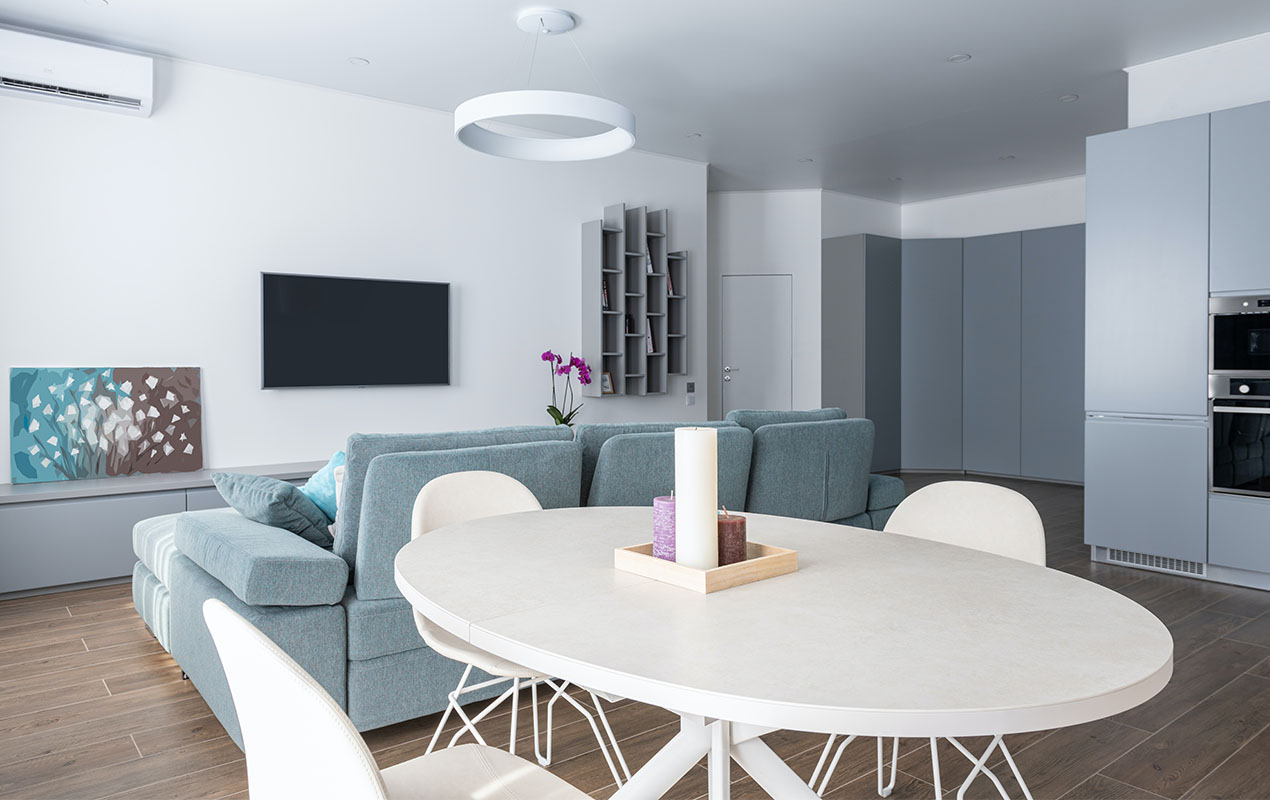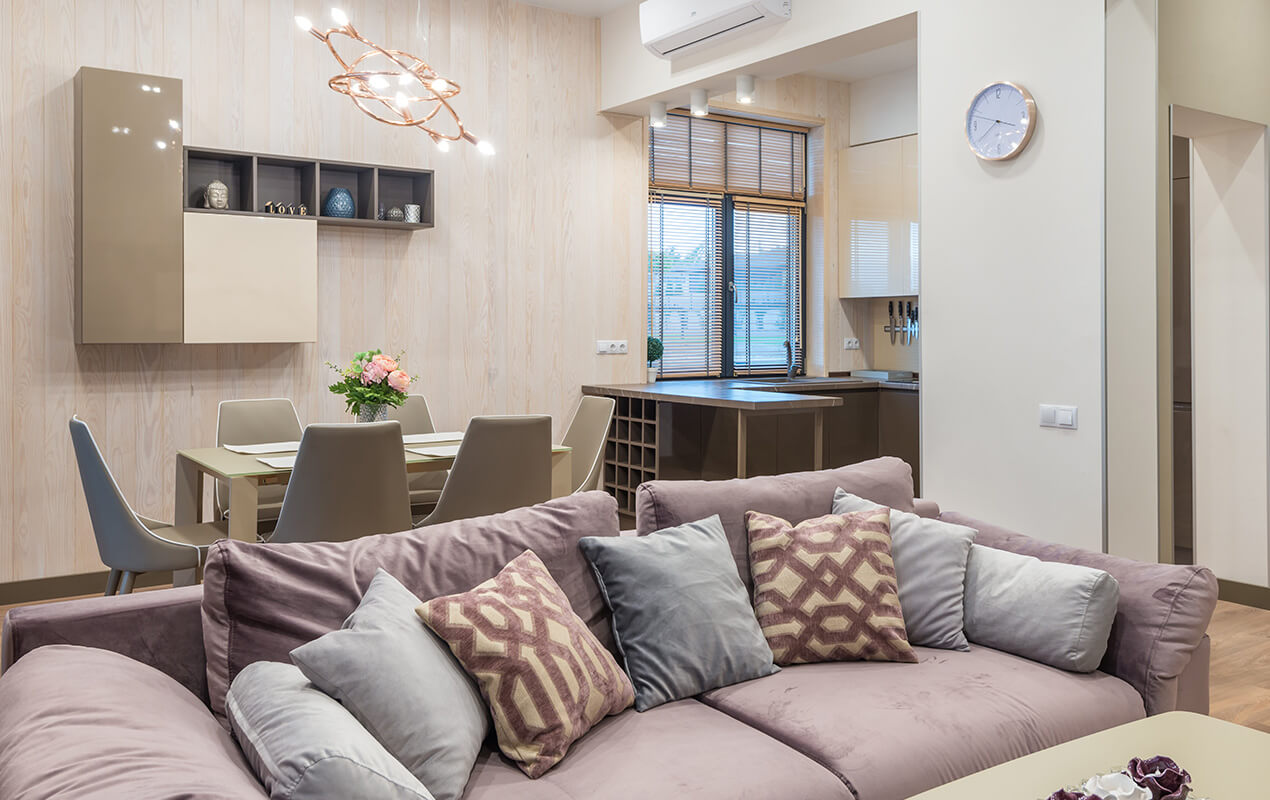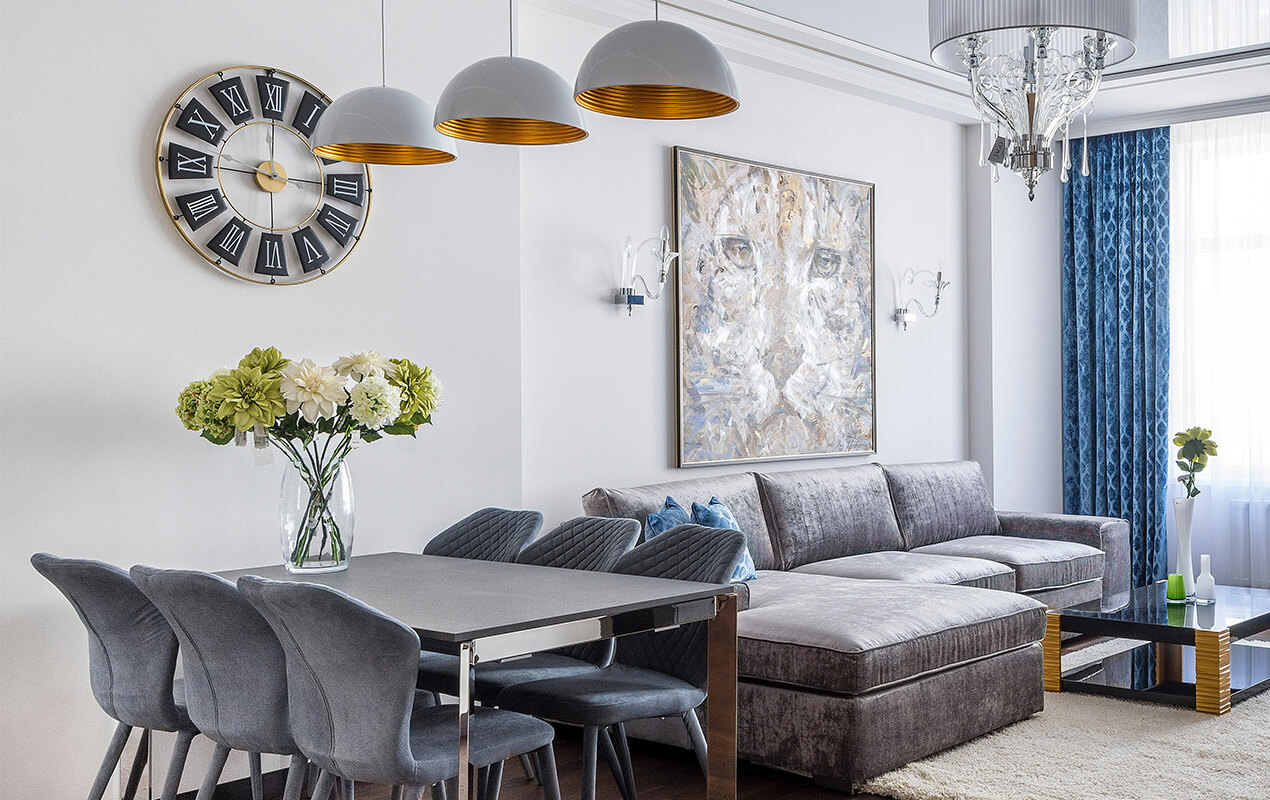Key Design Elements for Styling a Living and Dining Room Combo

Open-plan living is a dream come true for some homeowners, but for others, it can feel like a mighty task to undertake. With a living and dining room combo in your home, you have plenty of space to experiment, but it also leaves you with many decisions. Will you keep your living room and dining room together in terms of style and decor, or will you try to make the spaces feel as distinct as you possibly can?
We’ve decided to give you some of our favorite living and dining room ideas and tips so you can approach the unique layout without feeling overwhelmed or at your wit’s end.
Consider the Purpose - Divided or Combined
Do you want your living and dining rooms combined or separate, despite their shared space? Before you start arranging furniture and buying new decor pieces, it’s essential to decide how you want to use the space. Also, if you plan on entertaining guests, it may be better to create an open living and dining room that feels connected and flowy, while for a family home where dinner and TV time shouldn’t cross paths, it’s better to make the areas feel more distinct. The rest of this article will feature advice for each of these approaches.

Photo by Max Vakhtbovych from Pexels
Insight - Feel free to experiment: The beauty of this sort of space is how much opportunity to try new things it brings with it, so feel free to give your ideas a chance in either direction.
Use Rugs to Divide Floor Space
While there are numerous choices you can make in terms of decor to make this kind of space feel distinct, they’re almost always going to share the same floor style. Additionally, using rugs is a great way to make the spaces within the room feel separate, allowing you to create zonal islands of sorts. You could use a nice fluffy shag rug to center the living room area, while something with a lower profile and subtle colors suits a more formal dining room atmosphere.
Use a Large Piece of Furniture
If you’re set on keeping your living and dining room a little more separate, the easiest way to create that distinction is by using a large piece of furniture. Plus, what’s a great living room without a big, comfy sofa to relax on?
This household essential can also act as your divider to keep the spaces separated by having the back facing the dining table, ensuring that thoughts of Sunday meals are far from your mind while you watch TV. Another choice could be free-standing shelving units, which work effectively as dividers.
Insight - Listen to your instincts: Don’t overthink your choices and trust your taste when putting the space together - if you want to try something more scatterbrained and bohemian, then go for it; it’s your house!
Create a Walkway
When figuring out the best way to use the space, it’s always important to consider the foot traffic you’ll have passing through it. Does the room lead out onto the patio or backyard? Will it be the hub for entertaining guests?
Regardless of how you wish to use your living room dining room combo, it’s vital you lay things out with plenty of space to move around easily, using your furniture to create clear walkways.
Keep it Consistent with Paint
If you’re leaning toward a more connected combo room, you should keep the color story of the walls consistent to make the space feel coherent. Once you’ve decided which on-trend paint color to populate the room, don’t stray too far from it with any of the four walls. Furthermore, If you want a little bit of distinction that still feels consistent, go for a slight change in the shade of one wall, but don’t opt for too much contrast if you plan on an open layout in terms of furniture.

Photo by Max Vakhtbovych from Pexels
Use Decor to Define the Spaces
This tip can go either way, as decor choices span so many different items, from mirrors and art to travel-influenced trinkets and larger pieces of furniture. The message here is to keep the styles consistent across the board if you opt for a more open-plan, all-purpose living and entertainment space and to do the opposite if you want to manufacture the division.
Things like hanging light fixtures and floor lamps will significantly influence how the space is absorbed by both you and the guests. Additionally, opt for a more formal chandelier over the dining table and populate the living room area with casual floor lamps as a surefire way to create the distinct vibes you want.
Use Art as Anchors
Choosing your art is a surefire way to add personality to your home, and it's also a great way to keep a sense of meshed harmony in your living and dining room combo. Moreover, by keeping up a consistent art style across the walls of the space, you give the room's decor a sense of purpose and impact. This goes well in conjunction with the former tip about the color of the walls, while each tip can also be turned on its head to help create the desired effect of division.
Insight - Don’t overcrowd: In an effort to create a sense of division, you might feel that you need to pack in as much decor as possible into either side of the combined space, but overcrowding will result in sacrificed function.
Final Thoughts
Combining the living and dining room in one place can feel limiting, but in reality, it provides plenty of creative opportunities. Whether you create a more free-flowing room that feels coherent or use pieces to create division, there are countless ways to make the most of this space. Now, you should be more confident than ever to combine your living and dining room, so start looking for the pieces that will define it!
https://www.decasacollections.com/living-dining-room-combo/
Comments
Post a Comment